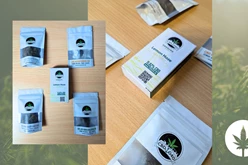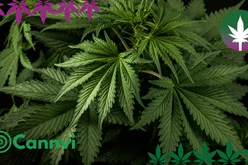Hemp cultivation is not a modern invention. In fact, the plant was much more widespread in agriculture in the Middle Ages and several millennia earlier than it is now.
It is hardly surprising that hemp was so popular as a crop and is slowly becoming so again. Not only is hemp easy to care for, the products made from it can also be used in many completely different areas.
Hemp is resilient
Hemp is undemanding . This is definitely not a disadvantage for crops. For hemp cultivation this means that it brings with it a number of ecological advantages.
Hemp plants do not require any fertilization. The plant is so robust that it thrives in almost any soil without being supplied with additional nutrients .
Extra watering is usually not necessary. In general, the water consumption of hemp is lower than that of comparable crops.
It's not just the plant itself that is resilient. The products made from it are also more durable . Paper made from hemp, for example, is significantly more durable than paper made from wood fibers. This means that hemp paper can be recycled more often, thus extending the material cycle. Hemp cultivation is therefore more sustainable and resource-saving.
Weeds don't have an easy time around hemp. The plant grows up to four meters high within a short period of time. It spreads its roots widely. This makes it much more difficult for weeds to gain a foothold. The hemp plant's dense canopy of leaves steals the sun. Their root system hinders the weed roots.
Additional hemp plants on agricultural land thus reduce the use of herbicides , which not only destroy weeds. The chemical agents damage the soil, the animals living in it and insects such as bees, which are essential for pollination.
Without pests, there are no aggressive pest controllers
Another valuable property of hemp is its resistance to all kinds of pests . When growing hemp, pest control agents are rarely used, which, like herbicides, also endanger beneficial insects.
The hemp plant doesn't even give fungi a chance, although it provides good conditions for it to grow. Their dense canopy of leaves creates a humid climate in which mushrooms thrive. However, hemp is so resistant to fungal attack that there is no danger of this either.
Hemp can be used in many different ways
People knew and valued hemp as early as 12,000 years ago (source) . The fibers were then woven into fabric that was suitable for clothing and sails for large ships. To this day, they are also used to make paper. Everyone probably knows sealing hemp and hemp ropes.
A more recent invention is hemp as a building material. They are later pressed into boards to make furniture. As a replacement for concrete, entire houses are built from it.
The seeds and fruits of the plant are edible. They are suitable for use in bread, cereal and chocolate. The seeds and the oil pressed from them are also found in various cosmetics and detergents.
THC is now an integral part of medicine again. It can relieve nausea and stimulate appetite (source) . It is therefore primarily prescribed for cancer and AIDS therapies.
What happens to leaves and plant remains?
In nature nothing is wasted. It seems like it's the same with hemp cultivation. No waste is created, nothing goes unused.
What cannot be processed in any other way ends up in power plants as biomass. The leaves and plant residues of the hemp plant produce renewable energy .
All that remains are stems that are not suitable for energy production. They return to agriculture, but not to the fields, but to the cattle sheds. The stems are extremely absorbent and are therefore perfect as bedding for farm animals kept in stables or, in a smaller version, for the rabbit enclosure in the home garden.



.png?h=64&w=200&mode=max&scale=canvas&format=webp&autorotate=true)












.png)